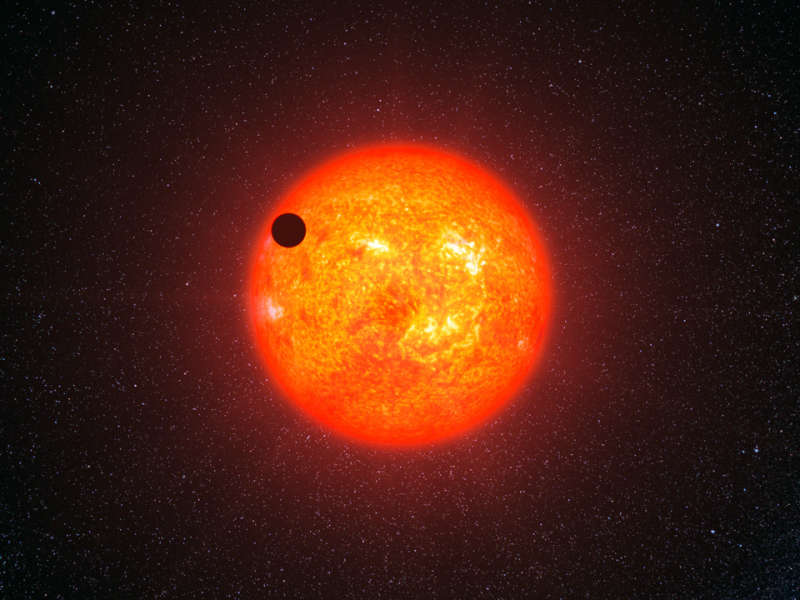Credit & Copyright: ESO, L. CalGada
Explanation:
Might this distant planet hold water?
Actually, given how close
Gliese 1214b is to its parent
star, any water, if it exists, would surely be in the form of steam.
In the
above artist's illustration, the super-Earth Gliese 1214b is imagined passing
in front of its parent star, creating a mini-eclipse that alerted humanity to its
presence.
Gliese 1214b, also designated
GJ 1214b, has been designated
a
super-Earth because it is larger than the
Earth but smaller a planet like
Neptune.
The entire Gliese 1214 planetary system is of the closest known systems to our Sun,
located only 42 light years away.
The parent star, Gliese 1214 is a slightly smaller and
cooler version of our Sun.
Recent observations
from the
Subaru telescope in Hawaii found very little
scattering of blue light from the parent star by the planet.
This appears
most consistent with a planet that has a watery atmosphere -- although it is
still possible that
the super-Earth has clouds so thick that little of any color of light was scattered.
Detecting water on
exoplanets is important partly because most
lifeforms on Earth need water to survive.
Follow APOD on:
Facebook
(Daily)
(Sky)
(Spanish)
or Google Plus
(Daily)
(River)
1999 2000 2001 2002 2003 2004 2005 2006 2007 2008 2009 2010 2011 2012 2013 2014 2015 2016 2017 2018 2019 2020 2021 2022 2023 2024 2025 |
Yanvar' Fevral' Mart Aprel' Mai Iyun' Iyul' Avgust Sentyabr' Oktyabr' Noyabr' Dekabr' |
NASA Web Site Statements, Warnings, and Disclaimers
NASA Official: Jay Norris. Specific rights apply.
A service of: LHEA at NASA / GSFC
& Michigan Tech. U.
|
Publikacii s klyuchevymi slovami:
extrasolar planet - water - ekzoplaneta
Publikacii so slovami: extrasolar planet - water - ekzoplaneta | |
Sm. takzhe:
Vse publikacii na tu zhe temu >> | |
